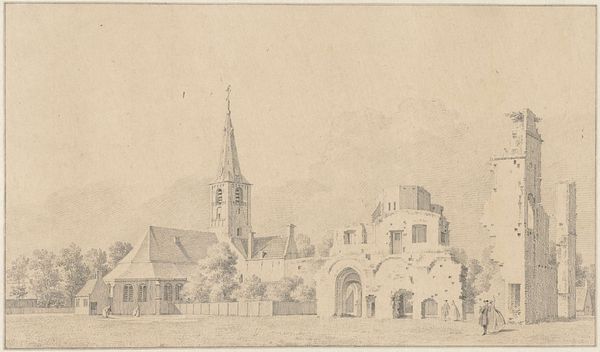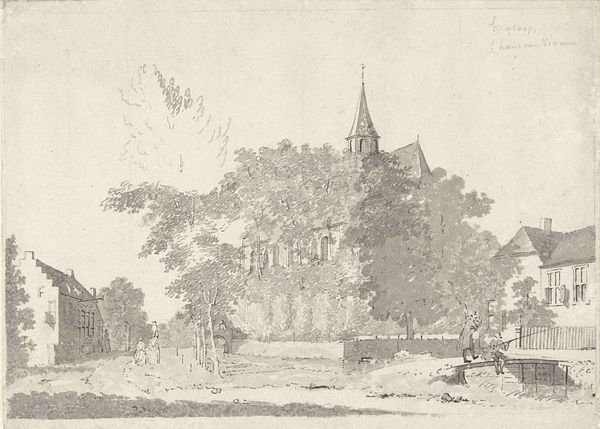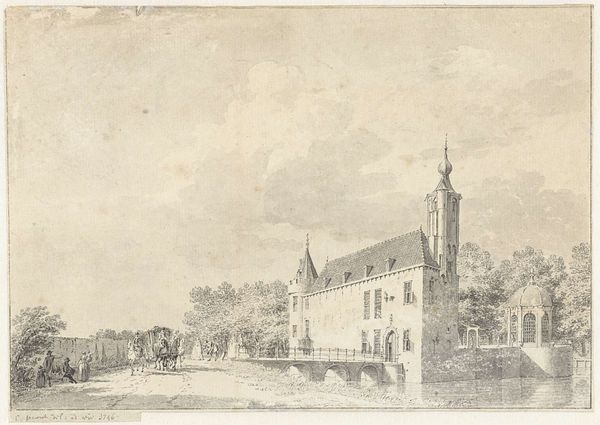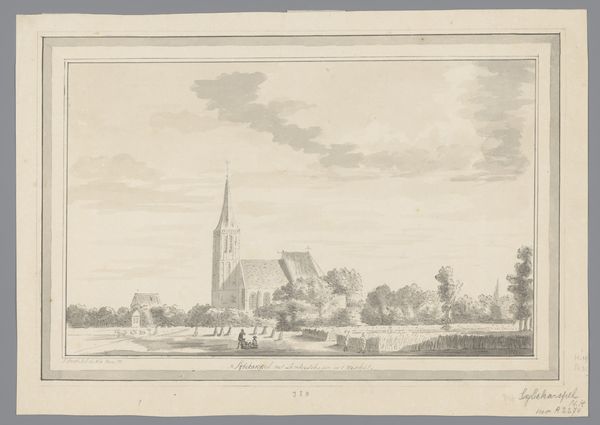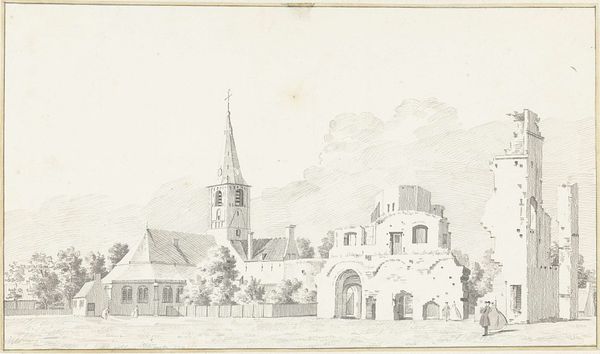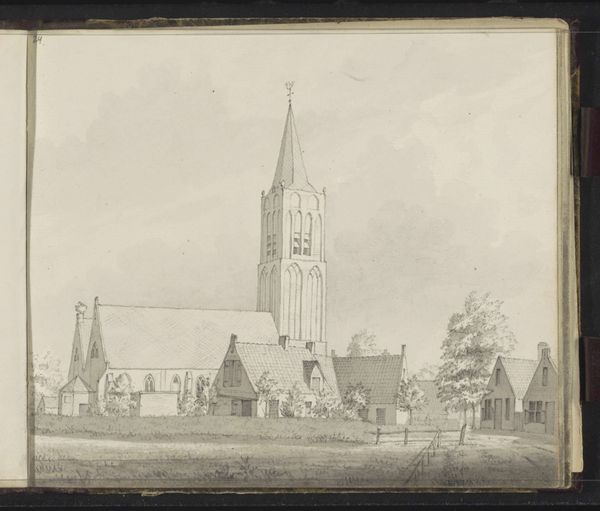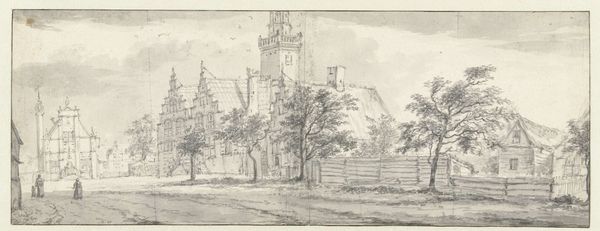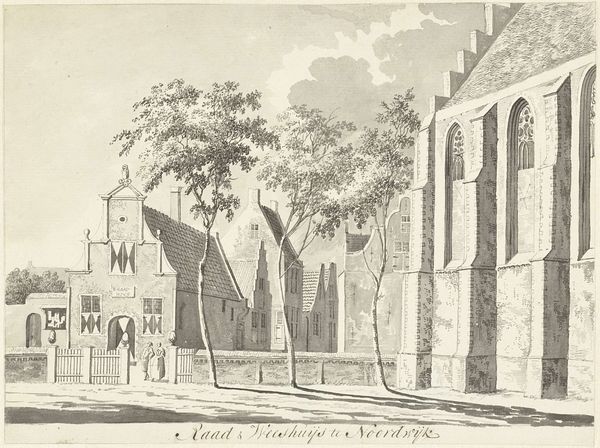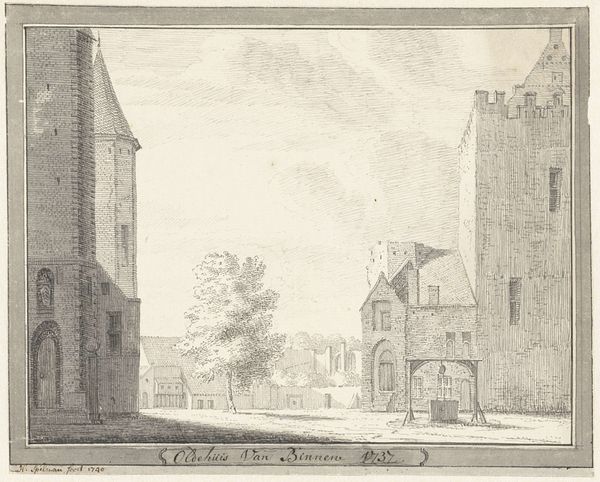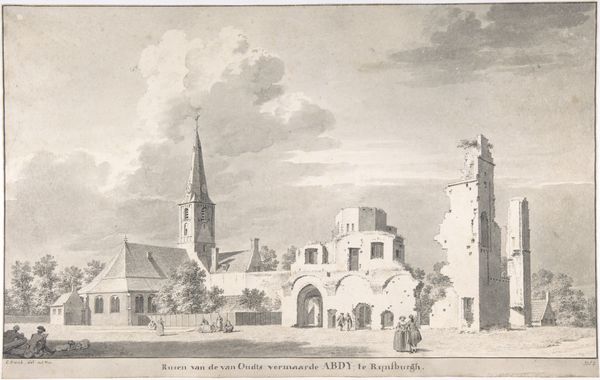
Dimensions: height 245 mm, width 382 mm
Copyright: Rijks Museum: Open Domain
Gerrit Toorenburgh created this drawing, "The Ruin of Rijnsburg Abbey," using pen and gray ink, with gray wash, sometime around the late 18th century. The restrained palette gives the scene a somber feel, emphasizing the contrast between the ruined abbey and the adjacent church still in good condition. We can think about the making of this drawing as a kind of labor, a skilled process of mark-making. The artist has used the qualities of ink, the fluidity and capacity for subtle tonal variation, to render the scene with detail. Consider the time it must have taken to create such a work. In Toorenburgh's time, there was a burgeoning market for picturesque views like this one. These captured sites of historical significance or natural beauty, as tourism began to take off, and the print industry expanded to meet demand. The materials might be simple, but the drawing is tied to larger social and economic transformations. The craft of drawing, like other forms of making, is always embedded in a specific historical context.
Comments
No comments
Be the first to comment and join the conversation on the ultimate creative platform.

